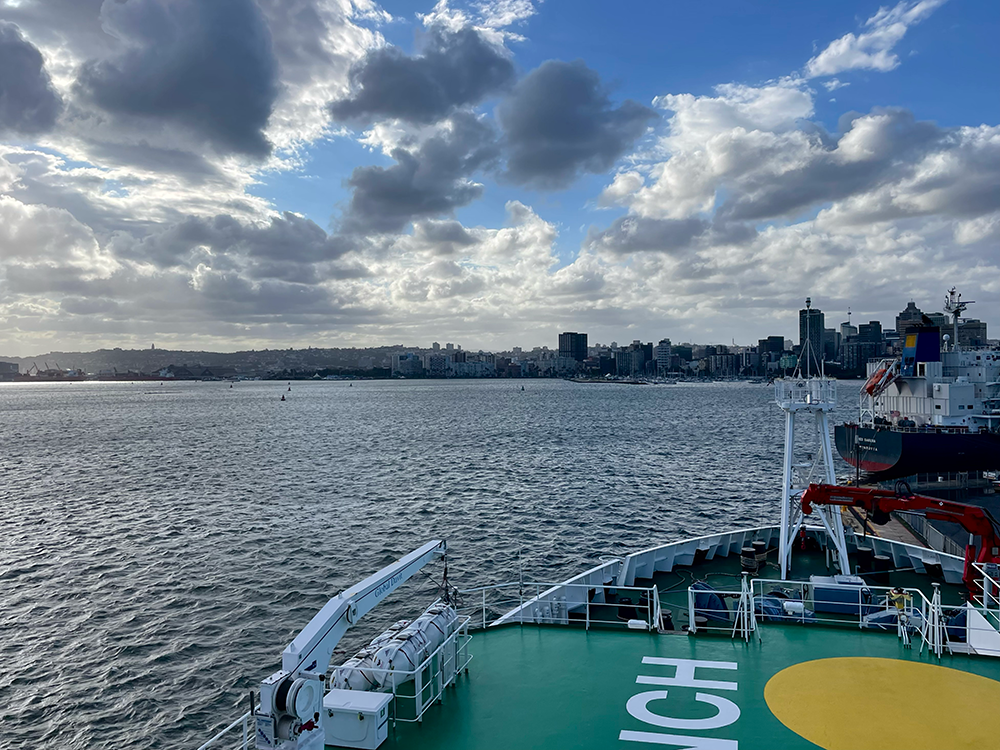All research cruises are a lot of work. This one, for many of us, is especially taxing, with CTD casts and sampling of surface water at all hours of the day and night. We make good use of the time, money, and energy expended to do good science—but we also like to let our more […]
Tuning in to phytoplankton rhythms
We have discussed phytoplankton quite a bit on this blog, from their part in marine snow creation to their potential reactions to ocean alkalinity enhancement. Their importance to the ocean—and the planet—is hard to overstate, and there are many aspects of their lives (and deaths) to explore. While our schedules have been chaotic this cruise, […]
Can the ocean help us fight climate change?
The ocean has always been one of Earth’s best defences in the fight against anthropogenic climate change. It absorbs about 25% of the carbon dioxide (CO₂) we emit, acting as a giant sponge for greenhouse gases. This carbon sink comes at a cost—this extra CO2 is making the ocean more acidic, and ocean acidification limits […]
Catching some rays
On a summer day in the south Indian Ocean, it can seem like the sunlight supply is endless. But even on the brightest day, most of the ocean stays dark. Only the upper layer of the ocean receives enough light for phytoplankton to perform photosynthesis, a process that uses light energy to convert the inorganic […]
Announcing some turbulence
In addition to their CTD duties described in the previous post, Kiel University-GEOMAR Climate Physics masters students Hannah Melzer and Paula Damke are always busy with something, from reading physics books for fun to creating beautiful artwork. Another task under their purview is measuring upper ocean turbulence using a microstructure profiler. The microstructure profiler is […]
The mighty CTD
Behold the mighty conductivity temperature depth (CTD) rosette! This is one of the workhorses of ocean research. Sensors measure conductivity (a proxy for salinity), temperature, light level, and other environmental parameters as they change with depth. These sensors are attached to a circular frame called a rosette that holds an array of sampling bottles that […]
Photographing particles and plankton
Tobias Strickmann, PhD student at GEOMAR, is a jack-of-all-trades here on the Sonne. He collects environmental DNA samples for Véronique Merten, a postdoc at GEOMAR, and he also works with Anita Butterley, PhD student at the University of Tasmania, to filter water for proteomics samples. In addition to being a great team player, he also […]
Uncovering the secrets of marine snow
Carbon’s journey to the deep Just like their larger cousins, the terrestrial plants, phytoplankton convert atmospheric carbon dioxide (CO2) into organic carbon. If their tiny carbon-based bodies sink from the surface ocean to the deep sea and sediments, the CO2 is then removed from the atmosphere for hundreds to thousands of years. The remains of […]
A little radium goes a long way
For many people, radium brings to mind Marie Curie and her historic discoveries and the dangers they posed. But radium is found all around—in rocks, sediments, and water— in such small amounts it cannot harm us. Several isotopes of radium exist naturally in the environment. They decay at different rates, and scientists like Cátia Ehlert […]
The journey begins: Sonne expedition 308
This cruise is a long time coming—the original proposal submitted by Chief Scientist Prof. Dr. Eric Achterberg estimated it would happen in 2017 or 2018! After we finally loaded the ship with equipment and 40 motivated scientists in late October 2024, we had to wait a few more days in port for repairs and inspections. […]
